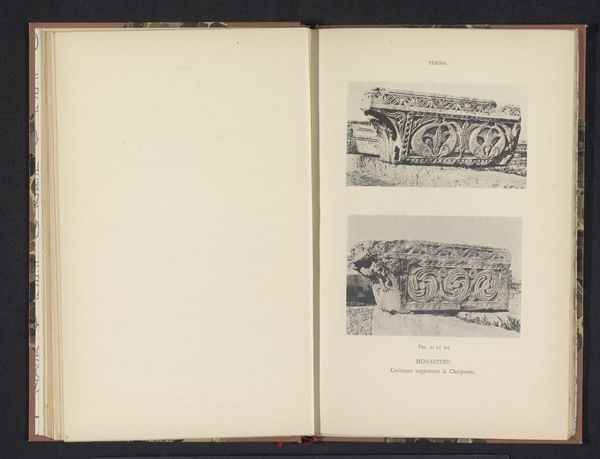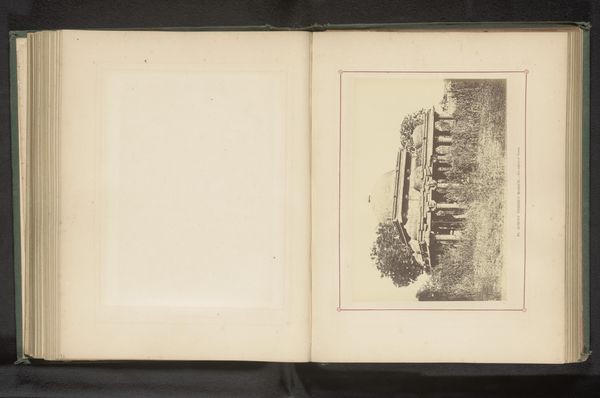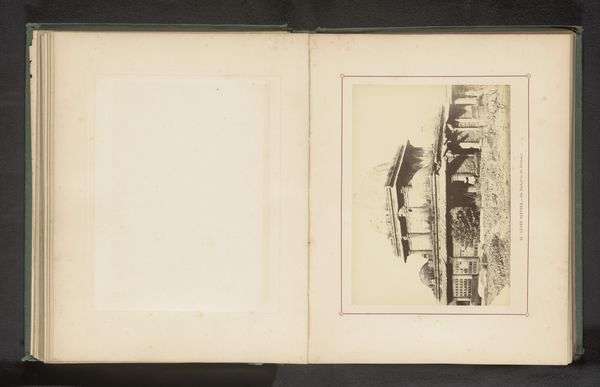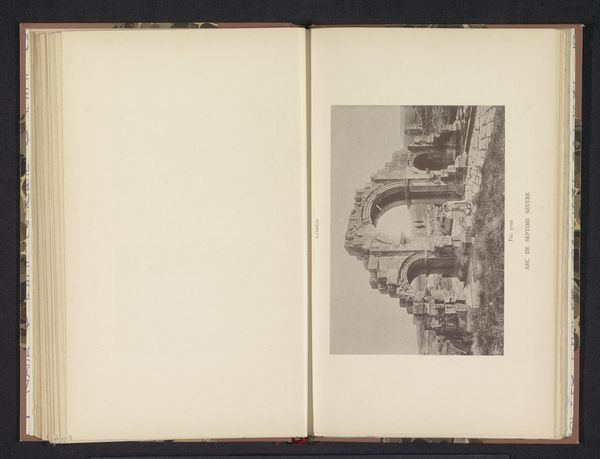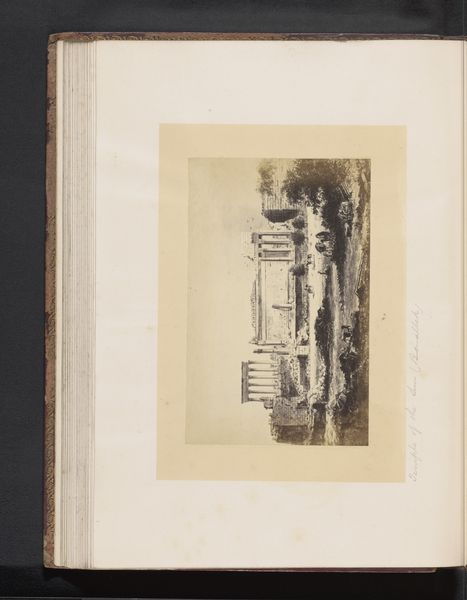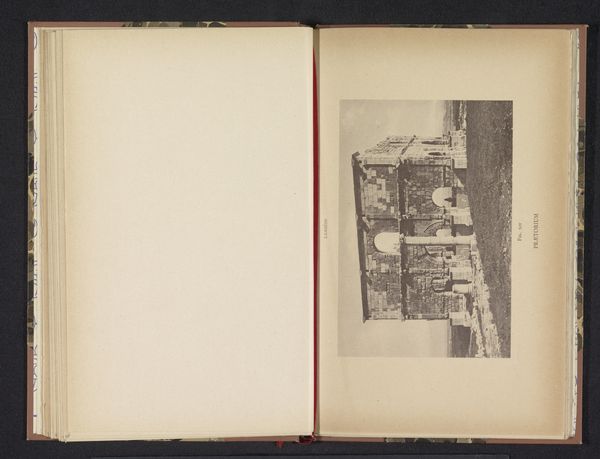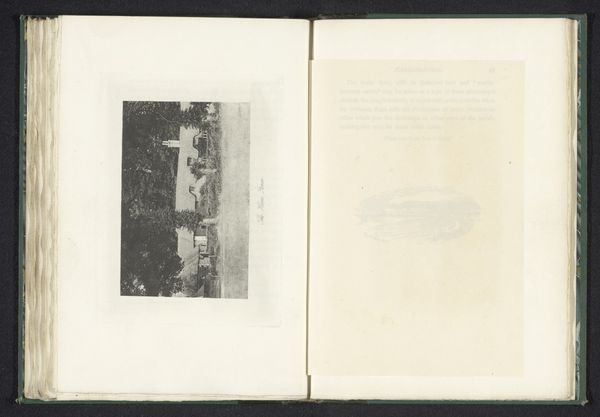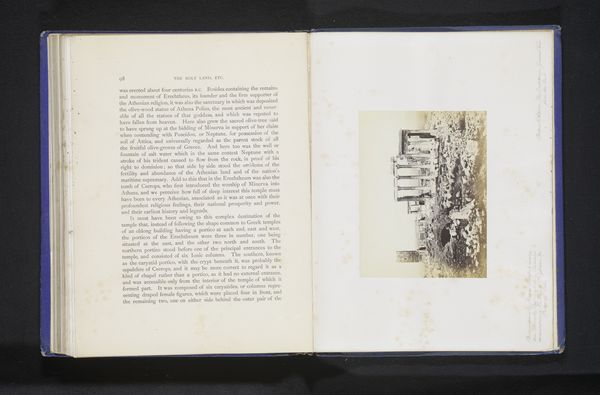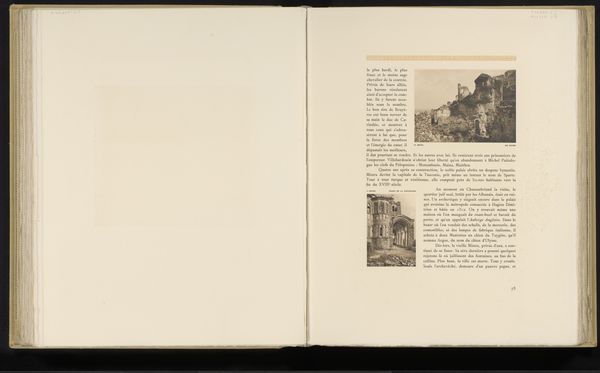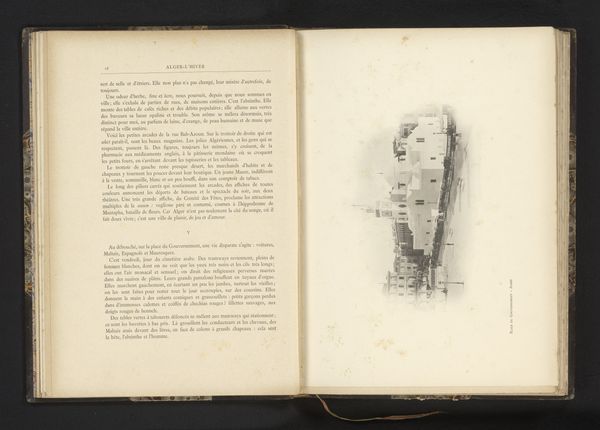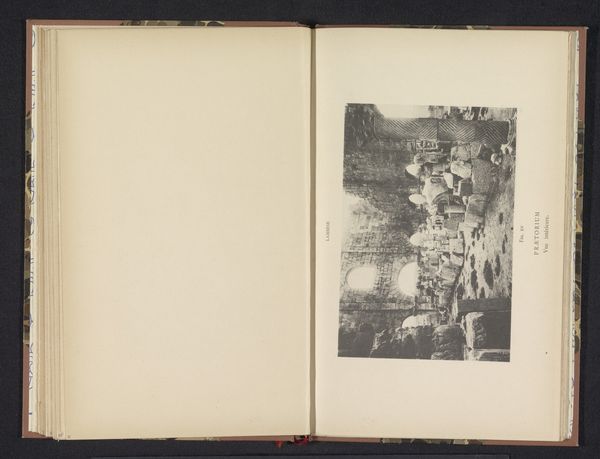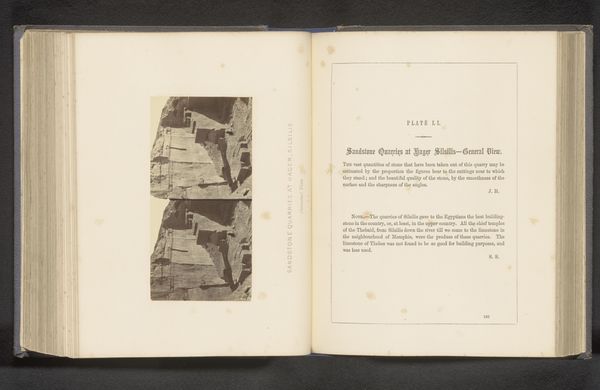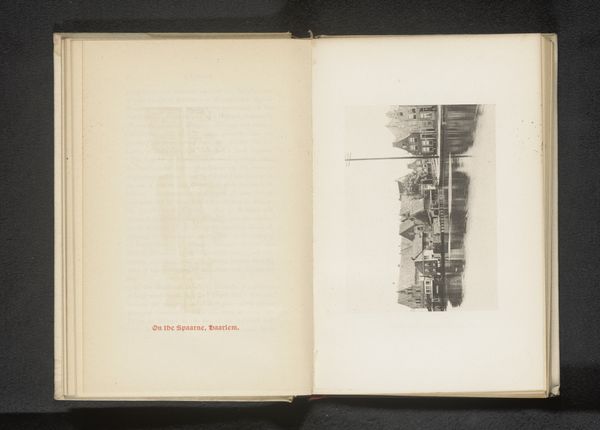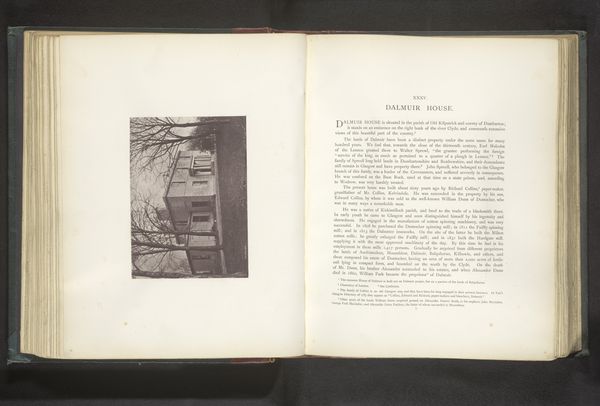
Twee kraagstenen van de ruïne van een Romeinse kloosterkerk in Tébessa, gedecoreerd met bladmotieven en golven before 1894
0:00
0:00
drawing, print, photography, architecture
#
drawing
# print
#
photography
#
romanesque
#
column
#
architecture
Dimensions: height 248 mm, width 160 mm
Copyright: Rijks Museum: Open Domain
Editor: Here we have an image, probably a photograph, of two corbels or, "Twee kraagstenen," from a Roman monastery church ruin in Tébessa. It's before 1894. The carvings are fascinating; very geometrical yet organic. What jumps out at you? Curator: Immediately, I notice the strategic use of vegetal motifs intertwined with geometric forms. Notice how the leaves and waves aren't merely decorative; they're almost codified, serving as a visual language. Consider how this contrasts with and perhaps reinforces the stability of the architectural structure. What feelings arise when you see such ordered depictions of nature? Editor: I suppose it makes me feel like nature is being tamed, even celebrated, within these defined architectural roles. Like humanity's asserting control, perhaps? Curator: Precisely. But the question remains: what memories, what values, were these symbols intended to evoke in those who beheld them centuries ago? The wave, the leaf...each held meaning. Were they standard throughout the region, referencing prosperity, or unique to this specific monastery? Editor: That's intriguing. I hadn't considered their localized meaning beyond general symbols. Are there other elements I should pay close attention to in reading the image's meaning? Curator: The relationship between the two stones pictured matters as well. Placed on the same page, what ideas emerge from this pairing? Do they reinforce one another, or offer subtle visual oppositions in style or implied purpose? Their proximity creates a conversation. Editor: I see that. I guess analyzing symbols helps connect the present to the past by understanding the cultural and emotional weight they carried. Thank you. Curator: And it's by continuing to ask questions and analyze those links between present and past that we unlock even deeper appreciation of the human narrative embedded in art.
Comments
No comments
Be the first to comment and join the conversation on the ultimate creative platform.
